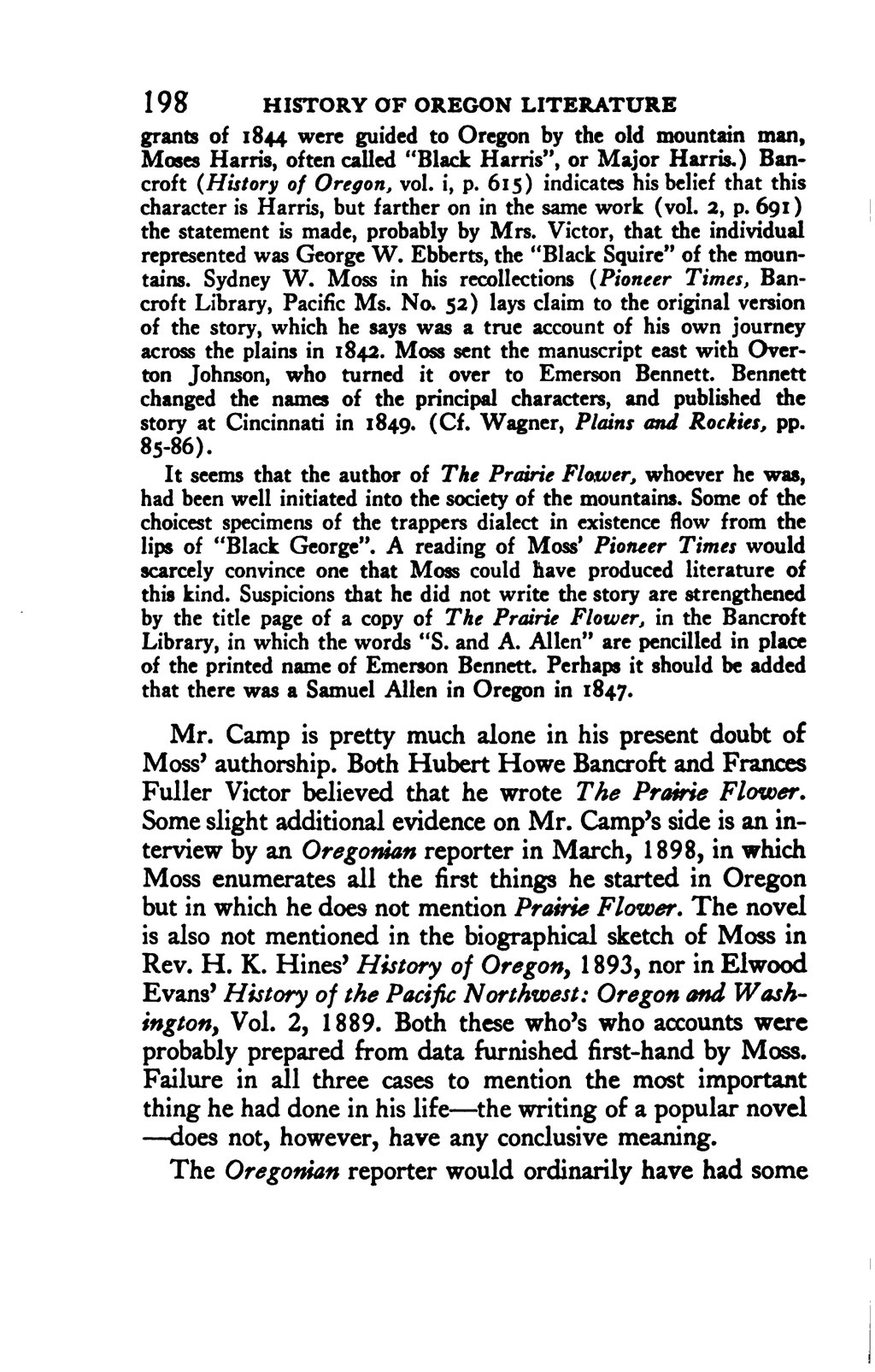grants of 1844 were guided to Oregon by the old mountain man, Moses Harris, often called "Black Harris", or Major Harris.) Bancroft (History of Oregon, vol. i, p. 615) indicates his belief that this character is Harris, but farther on in the same work (vol. 2, p. 690 the statement is made, probably by Mrs. Victor, that the individual represented was George W. Ebberts, the "Black Squire" of the mountains. Sydney W. Moss in his recollections (Pioneer Times, Bancroft Library, Pacific Ms. No. 52) lays claim to the original version of the story, which he says was a true account of his own journey across the plains in '842. Moss sent the manuscript east with Overton Johnson, who turned it over to Emerson Bennett. Bennett changed the names of the principal characters, and published the story at Cincinnati in 1849. (Cf. Wagner, Plains and Rockies, pp. 85-86).
It seems that the author of The Prairie Flower, whoever he was, had been well initiated into the society of the mountains. Some of the choicest specimens of the trappers dialect in existence flow from the lips of "Black George". A reading of Moss' Pioneer Times would scarcely convince one that Moss could have produced literature of this kind. Suspicions that he did not write the story are strengthened by the title page of a copy of The Prairie Flower, in the Bancroft Library, in which the words "S. and A. Allen" are pencilled in place of the printed name of Emerson Bennett. Perhaps it should be added that there was a Samuel Allen in Oregon in 1847.
Mr. Camp is pretty much alone in his present doubt of Moss' authorship. Both Hubert Howe Bancroft and Frances Fuller Victor believed that he wrote The Prairie Flower. Some slight additional evidence on Mr. Camp's side is an interview by an Oregonian reporter in March, 1898, in which Moss enumerates all the first things he started in Oregon but in which he does not mention Prairie Flower. The novel is also not mentioned in the biographical sketch of Moss in Rev. H. K. Hines' History of Oregon, 1893, nor in Elwood Evans' History of the Pacific Northwest: Oregon and Washington, Vol. 2, 1889. Both these who's who accounts were probably prepared from data furnished first-hand by Moss. Failure in all three cases to mention the most important thing he had done in his life—the writing of a popular novel—does not, however, have any conclusive meaning.
The Oregonian reporter would ordinarily have had some
